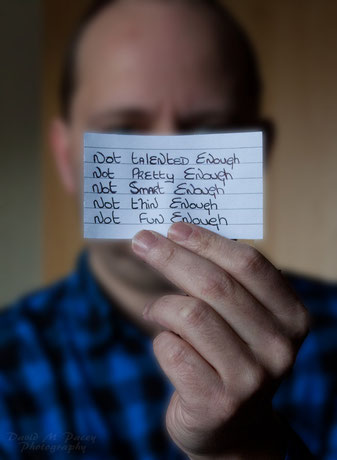
THOUGHT DEFUSION: An Alternative Approach to Handling Intrusive Negative Thoughts
Automatic negative thoughts are a natural part of the human experience. For the most part, we don’t conjure them up or think them on purpose. They happen instinctively.
Negative thoughts get directed toward ourselves (“I can’t believe I’m running late again today! I’m going to get fired!”), toward others (“There’s Jim, walking in late; he’s so lazy.”), and toward our environment (“Stupid Portland traffic! It’s making me late!”). Sometimes negative thoughts are so pervasive that they can tank your mood for the day, or leave you stuck in a spiral of worries. These natural, instinctive thoughts can take on a life of their own!
In the book, “The Happiness Trap,” Steven C. Hayes describes what happens when we become “fused” with our negative thoughts:
- Thoughts are reality: as if the awful thing we are imagining is actually happening
- Thoughts are the truth: we completely buy-in
- Thoughts are important: we treat them seriously and urgently, giving them our full attention
- Thoughts are orders: we must obey them
- Thoughts are wise: we assume they know best and we follow their advice
- Thoughts are threats: we let them bother us or terrify us
He suggests that some “fused” thoughts may be helpful and others might not be as helpful. Those thoughts that ARE helpful and constructive are worth giving your time and emotional energy. For example, the thought that says “I can’t believe I’m running late again today” might prompt you to examine your morning routine, adjusting it to allow for more margin.
On the other hand, some thoughts are downright self-defeating and serve no useful purpose but to shame you, worry you, or leave you feeling stuck. It’s up to you to determine which thoughts are, in fact, not helpful. Those will be the thoughts you might be ready to “defuse” or disconnect from.
Here are some creative strategies for creating distance for those pesky negative thoughts that you need some space from:
- Label your thoughts as thoughts (Example: “I’m having a thought that I’m worthless” feels different than “I’m worthless”).
- Imagine your thoughts like clouds in the sky, just passing by. They can come and go as fast or slow as they please, simply watch and observe them without judgment. Become a fly on the wall observing thoughts, labeling them (“there’s a thought”), and letting them go on their way. Some thoughts are recurring visitors, appearing over and over. That’s okay! You can simply notice them and watch them pass on by.
- Try out one of your particularly “fused” negative thoughts using the voice of a movie or cartoon character (how does it feel differently to say the negative thought using the voice of Micky Mouse or the voice of Al Pacino from The Godfather?).
- Try singing the thought to the tune of “Happy Birthday” or “Jingle Bells.” Does it still feel the same?
- Don’t only observe your thoughts, but also try shifting your focus to observing your body. Notice your breath–See if you can track your breath from the moment it enters your nose (cool and refreshing) to the moment it exits your mouth (warm and rushing). Notice how your feet feel in your shoes, where you feel tension, and where you feel at ease.
If you’d like to learn more about thought defusion, “The Happiness Trap” is an excellent resource guide. Thought defusion skills are an integrated part of Acceptance and Commitment Therapy (ACT). Cognitive-Behavioral Therapy (CBT) is another therapeutic approach that has been specifically designed for helping shift unhelpful, negative thought patterns in a more direct manner. A professional counselor can guide you in customizing coping skills so that you can shift out of negative thought ruts and feel free from their persistent haunting.




